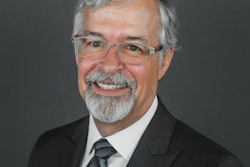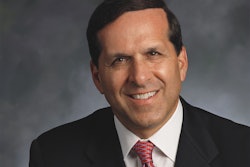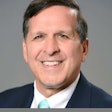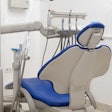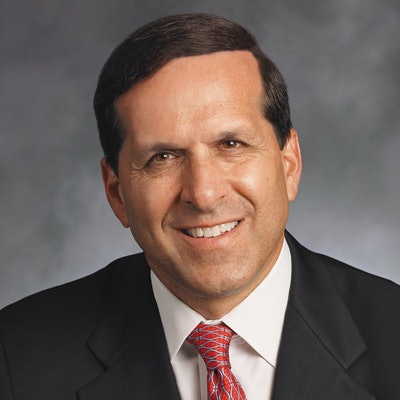
In my research for a new book, several key elements that contribute to maintaining a high longevity team or keeping your team for life became evident. We know we have a national staffing crisis and that it will not be resolved anytime soon. The best way to build a high-level team is to maintain team members by continually helping them elevate in their skill set, motivation, and satisfaction.
How do you keep your team for life? Well, the truth is that you probably will not keep your team for life. People will have lifestyle changes or retire and that will necessitate bringing new team members on board. The title of this article, "Keep Your Team for Life," is really focused on building a high longevity team. Dr. Roger P. Levin
Dr. Roger P. LevinIn a 30-year ongoing study of the top performing practices based on production, Levin Group has identified that the average practice in the top 10% has higher team longevity, with an average of 11 years. This raises questions about how these practices managed to keep team members for so long, such as:
- Were they better at the hiring process?
- Do they pay more?
- Are the team members really happy?
- Did they lose team members at the same rate as other offices during what is referred to as the "great resignation?"
We found that these top 10% of practices and doctors have basically the same level of turnover earlier in their careers as most other practices. However, one difference that became evident from observation and interviewing was that these doctors simply did not have a tolerance for poor-performing staff members. Furthermore, they were willing to go through the inconvenience of replacing people until they hired team members who were the right fit for their practice.
Some of these top 10% of doctors explained that it was simply a matter of trying to hire the best people, and over time, they were able to build a high-quality team that was motivated and had a desire for continual growth and improvement. Their leadership skills and compensation packages were not necessarily better; however, their team members were definitely happier, and this led to the high rates of longevity in these practices.
It is also worthwhile noting that over time, these doctors tended to become better leaders and understand the ongoing team-building and team motivation process at a deeper level, and this was motivated by true caring for their team.
Building the high longevity team
Several key factors are different today in building a high longevity team. The following recommendations will benefit any practice in understanding what team members really care about and knowing the best ways to create a positive environment so that team members want to stay long term.
1. Transaction vs. relationship
In the past, most dental practices had a transactional relationship with the staff. Although there was a lot of friendliness and caring, the relationships were still based on transaction, which means, "I pay you, you work for me."
Today's team members no longer want that type of employment. The days of transactional employment are now resulting in many staff members changing jobs or even leaving the profession altogether.
The new employment model is one we refer to as "relationship employment." Team members want to join a practice where they feel they can build great relationships with the doctor, other team members, and patients. This is a major shift in thinking, and practices that understand how to facilitate these positive relationships and offer team members true caring and compassion will be successful at building high longevity teams.
2. How well do you know your team?
As doctors, you spend a great deal of time with your teams in a small physical space. You see them throughout the day, pass them in the halls, and work with them consistently. However, this does not mean you really know them on a deep personal level.
I suggest that you meet with every team member every eight weeks for 10 or 15 minutes. Simply have a brief conversation to ask them how they are doing, what they do and don't enjoy in the practice, their recommendations for improvement, etc.
We recently advised a doctor to meet with a 12-year team member. This person had been a star performer but was suddenly displaying a negative attitude. After talking with the team member, the doctor discovered that she was the caregiver for elderly parents who were quickly declining, and the situation was causing severe issues in her marriage.
Your reaction to this may be that personal problems should not be brought into the office, and she needs to get herself together. This is a transactional leader's reaction. Fortunately, this dentist was willing to build relationship employment models and become a relationship-based leader. Rather than chastise her, he simply asked her what he could do to help.
To ensure proper care for her parents, she needed to arrive at work later. He told her to start coming in 30 minutes later for the next six months, he would check in periodically to see how she was doing, and she should let him know if she needed anything.
Keep in mind that giving up on this employee and spending time hiring, interviewing, designing compensation, training, and onboarding would have cost the practice much more than applying the compassionate leadership of having her come in 30 minutes later for the next six months. In fact, the situation turned out very well. Her attitude immediately improved, she bought the doctor a small gift to thank him for his understanding and compassion, and she went back to being a star performer.
3. The leadership factor
Staff members today, like many employees, want to belong to something, feel like they are contributing, enjoy their work, and make a difference in the lives of patients. This may sound idealistic, but it is up to a leader to move the practice in this direction.
I recently saw an example of a doctor who asked every team member to write down the answer to the following four questions:
- What job title would you like?
- What do you like about your job?
- What do you not like about your job?
- What solutions would you recommend?
I had the opportunity to see the feedback and most of the team's responses were extremely impressive. The answers were thoughtful and honest, and the solutions led to some immediate improvement opportunities.
As a follow-up, we advised the doctor to meet with each team member one on one and talk through what they had written with an open and honest level of communication to clarify what the team member was thinking and how they were feeling. This was an excellent exercise that provided many benefits to the practice and helped the doctor cultivate great relationships with the team.
Summary
The major focus of our work is to increase practice production. One of the most important factors in increasing and maintaining high levels of production is to have a highly trained team that is committed to the practice. When team members feel that the doctor and office managers are continually building better relationships with them, are interested in them as people, and view them more as friends than as employees, the practice will move toward "keeping the team for life."
Transactional employment is no longer sufficient. Relationship employment is now the "go-to" team-building strategy, and the rewards will be significant for everyone.
Dr. Roger P. Levin is CEO of Levin Group, a leading practice management and marketing consulting firm. To contact him or to join the 40,000 dental professionals who receive his Practice Production Tip of the Day, visit LevinGroup.com or email [email protected].
The comments and observations expressed herein do not necessarily reflect the opinions of DrBicuspid.com, nor should they be construed as an endorsement or admonishment of any particular idea, vendor, or organization.




